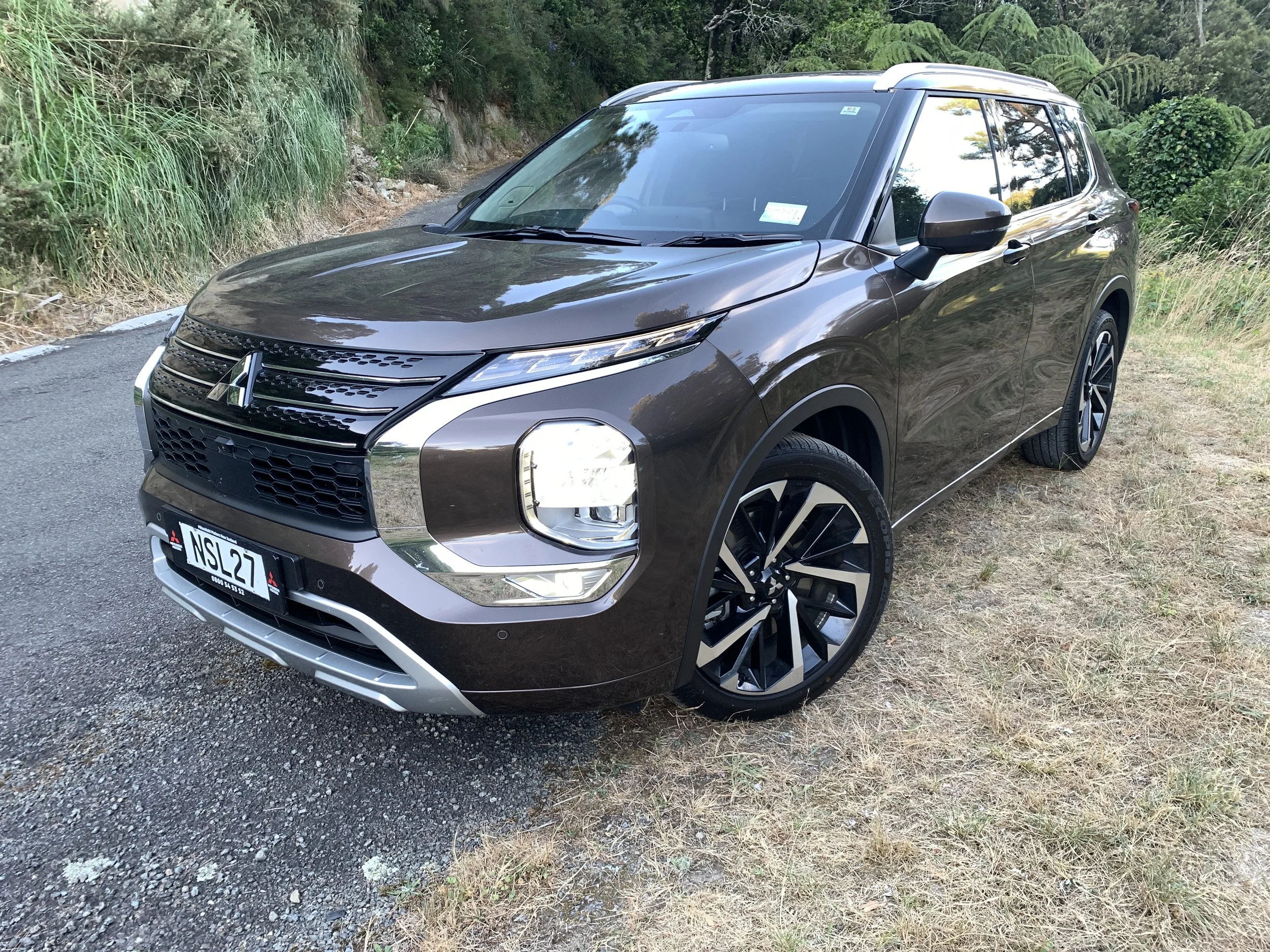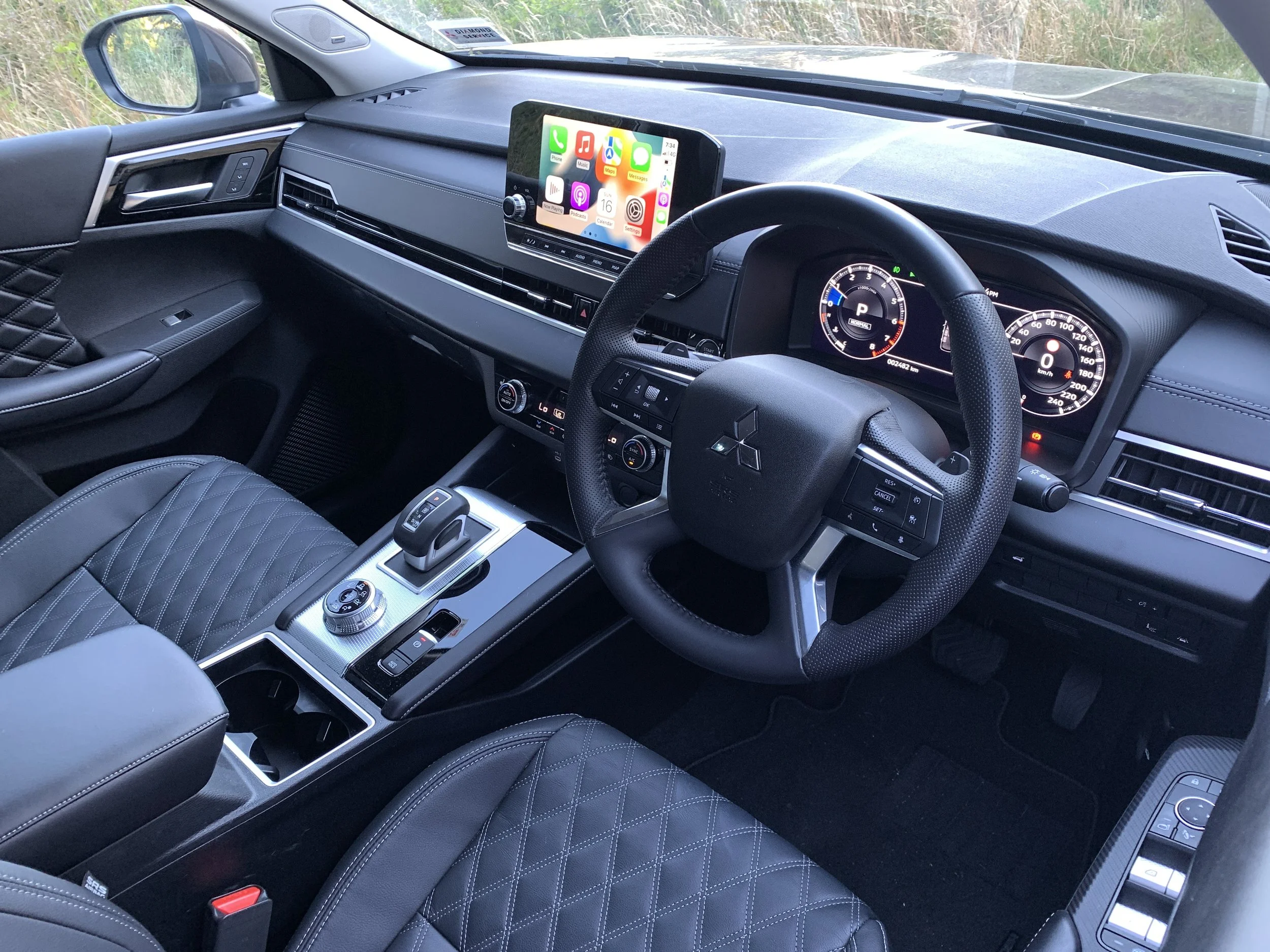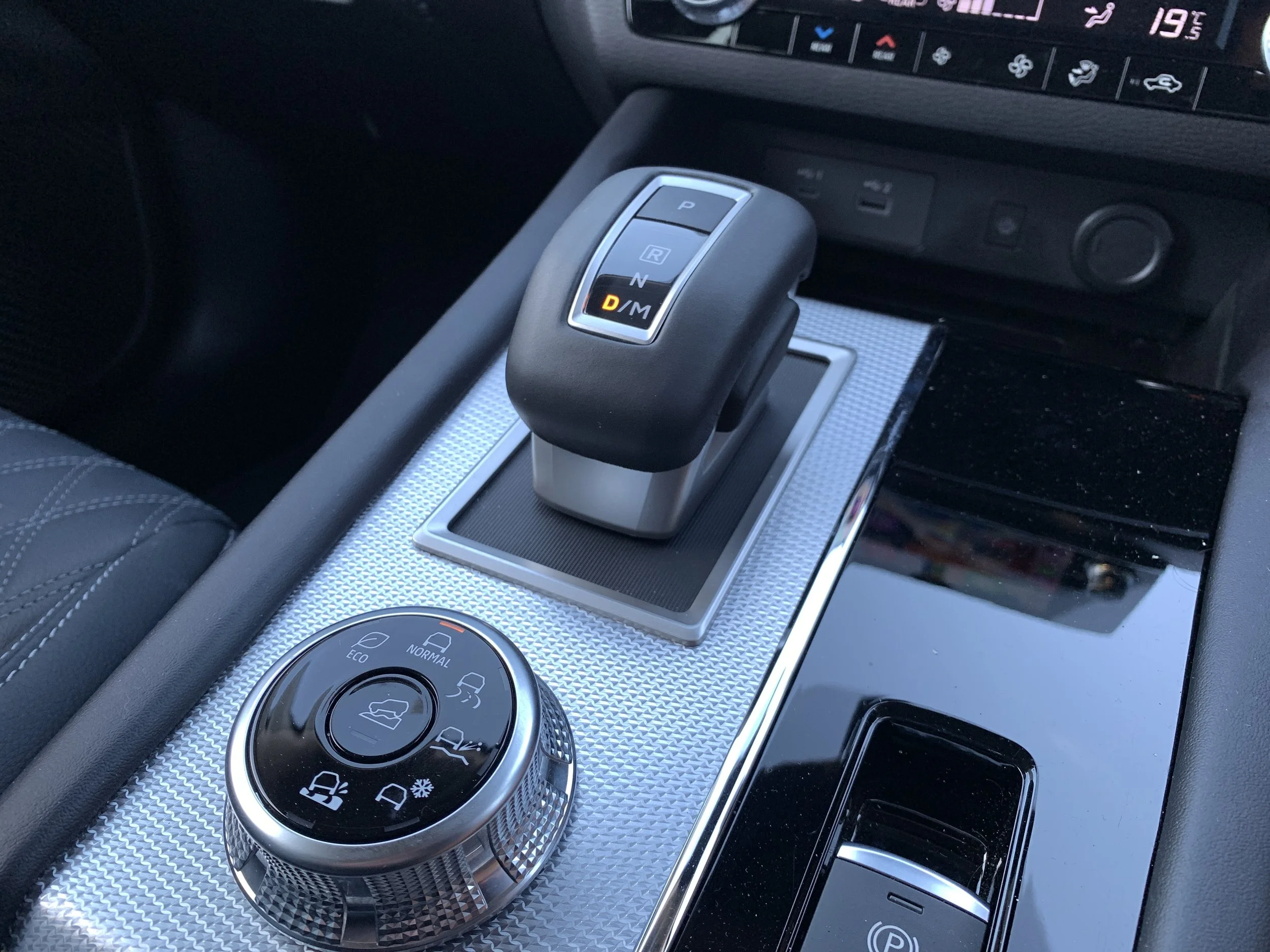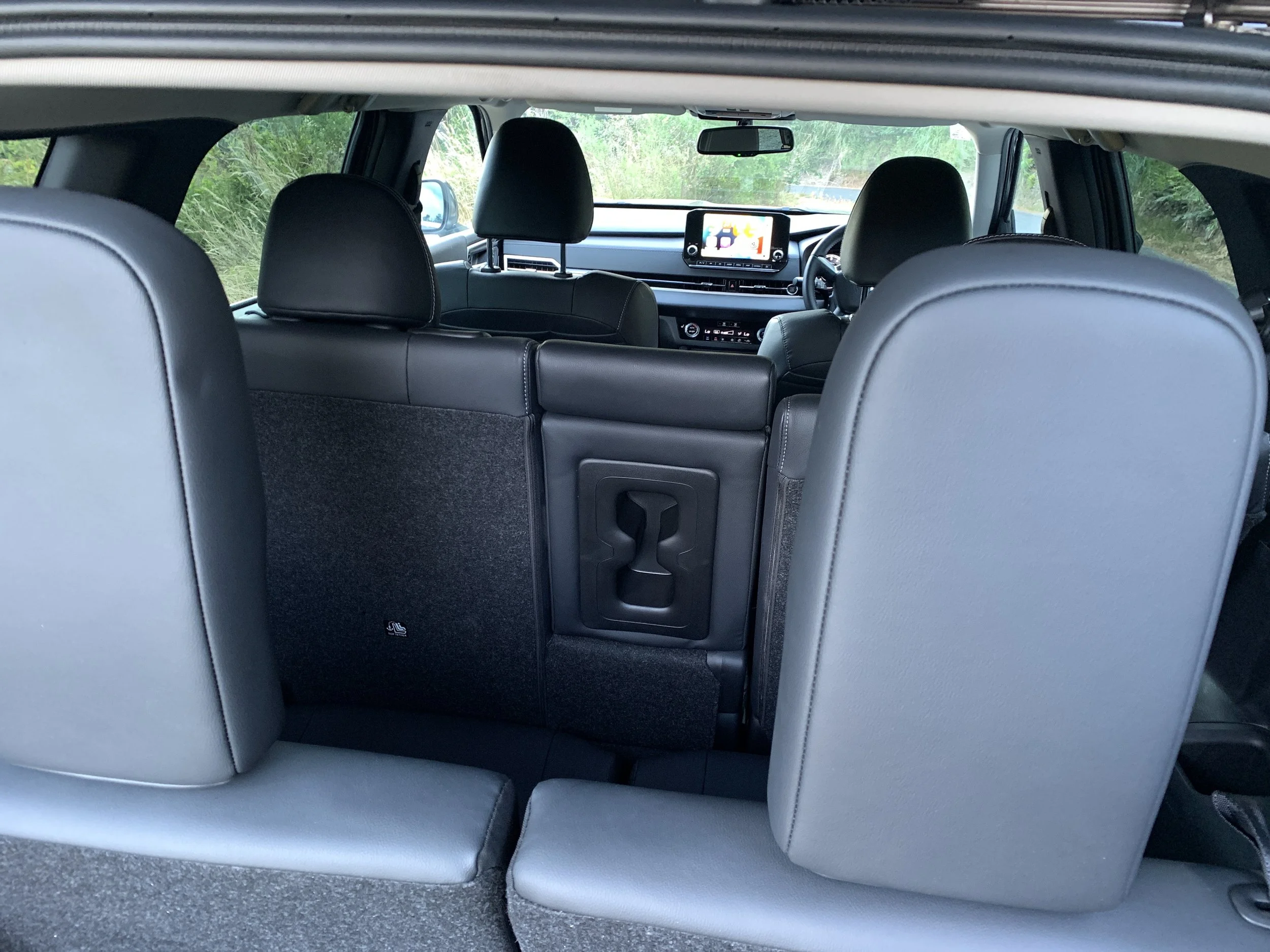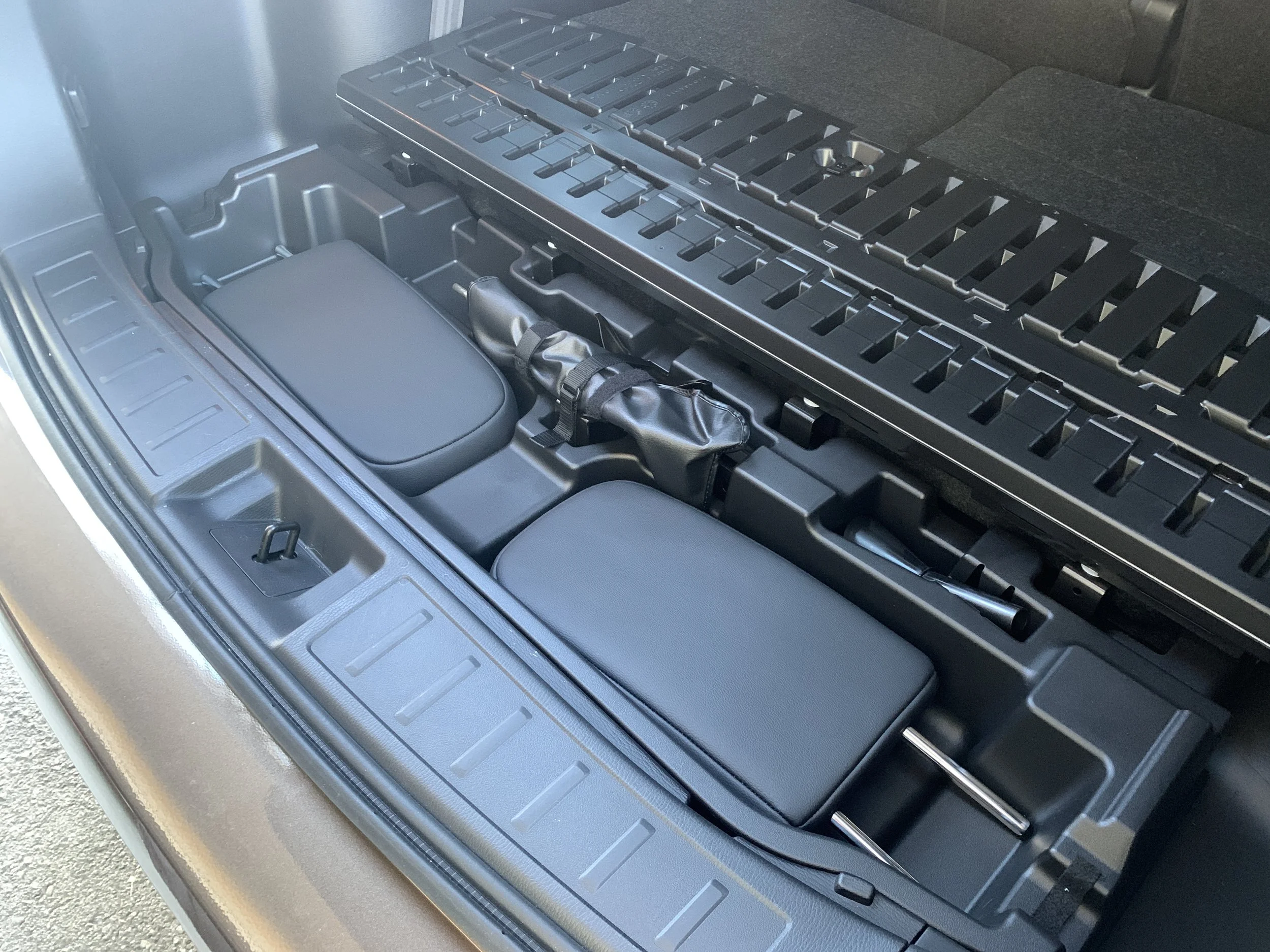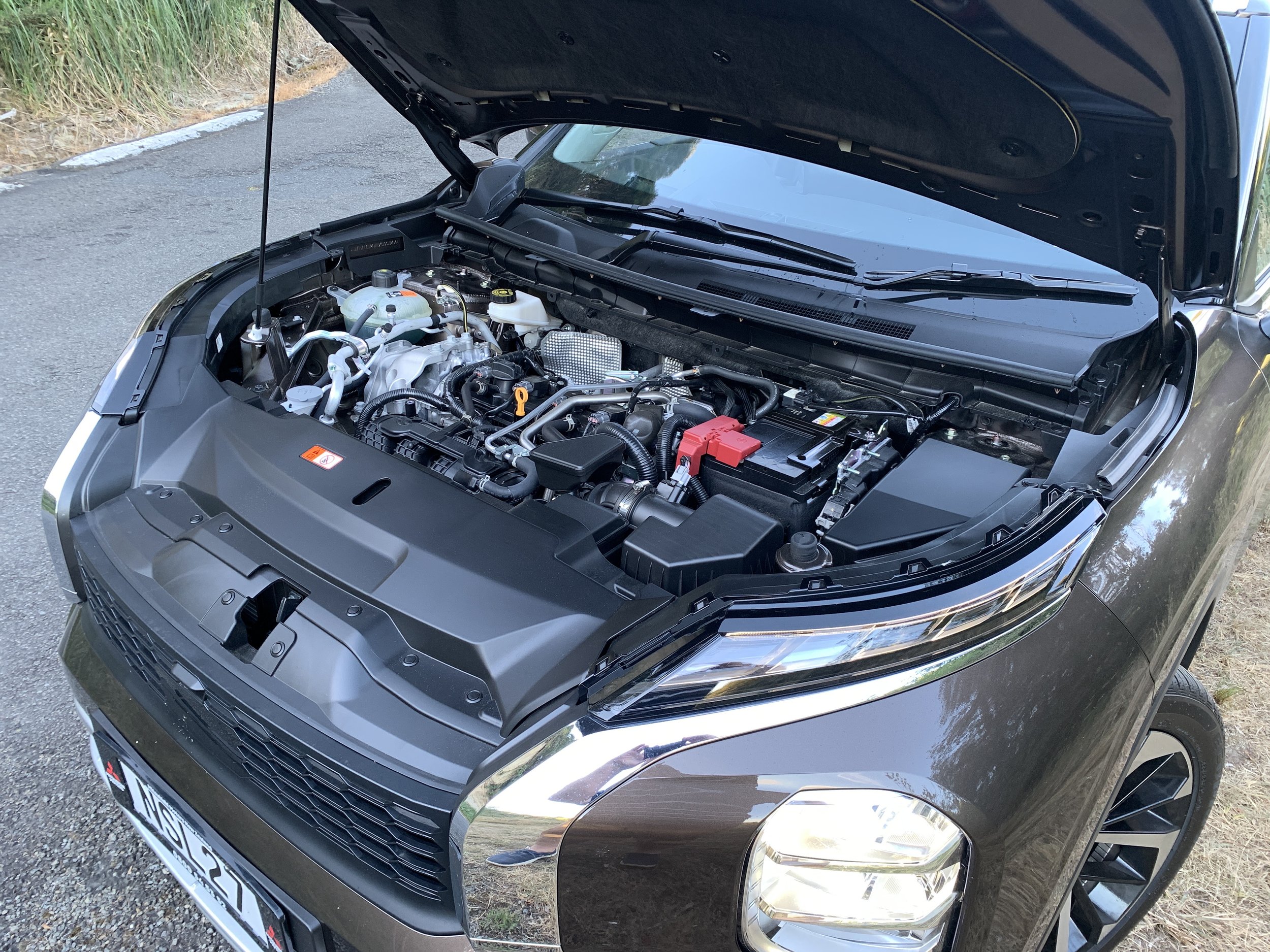Mitsubishi Outlander VRX second review: When schmooze hits the rough
/It’s a new start, at a new level in almost every sense. The flagship’s tech is a winning ingredient. Which raises a challenge, just now.
Price: $54,990.
Powertrain and economy: 2.5-litre four cylinder direct injected petrol engine, 135kW/6000rpm, 245Nm at 3600rpm, eight-step CVT automatic transmission, official economy 8.1 L/100km combined, 185g/km CO2.
Vital statistics: 4710mm long, 1745mm high, 1862mm wide, 2706mm wheelbase; luggage space 163/478/1473 litres.
Like: New platform, technology, a great brand-builder.
Don’t like: A couple more centimetres’ floor space would resolve seat space compromises; .
INSTANCES of give and take have affected the new-generation Outlander since contributing tester Rob Maetzig ran it in December.
The ‘give’ is a good one. The model been delivered a seriously good star rating by the independent authority whose scores have official sanction here.
The car very much impressed the Australasian New Car Assessment Programme. The Melbourne-based, NZ-funded tester awarded the maximum five stars. The result is specific to the wholly petrol 2.5-litre versions that are on sale now and not the plug-in 2.4-litre hybrid edition yet to land.
What’s been taken? Anyone who’s been reading this website’s new section over the past week will know the answer to that question.
It’s the snazzy digital dash, featured in the photos here because the test car was the same one ‘Mato’ drove.
The press example was from the initial shipment of 100 cars which, it transpires, could well be the sole examples to have the feature for a while, though how long is a mystery.
The second subsequent shipment, which came at the end of December, and potentially all further deliveries for an undetermined time, have regressed to an old-style analogue dash, Mitsubishi explaining that it has fallen victim to the global semiconductor shortage impacting the entire car-making world. Tough break.
The crash test score came during my time with the same car my colleague had driven and news of the dash being … well, dashed … revealed not long after he’d sampled it, both adding flavour to what was an interesting experience.
I’m not going to rehash the same points Rob made, but reckon I’ve some additional observations that might prove pertinent.
I tried not to get drawn into argument about how it looks, but decided that’s impossible. Everyone’s into ‘strong’ design statements these days, yet accepting that I’d contend it’s not perhaps the most elegant creation in this class. You might spend time during daylight hours wondering which of the light sets actually provide the roll of delivering actual after-dark illumination and which are there just to add to the visual drama. Just to set you right, the lamps set into the big oblong shapes do the big job.
There was no secret to how the old car kept its sales motor running. As it got older, it became cheaper and so established itself more solidly as a ‘value’ drive. Which it was. It has genuine bang for buck at the heart. Yet it was also well dated, being for one the final model in the market to utilise a platform that, after all, was also used by a Hyundai and a Dodge that disappeared into motoring history years ago.
Even though a little of the old transfers to the new, there’s nowhere near enough to keep the old sales strategy alive. It’s moving up in look, in size and in provision, particularly tech, but will that be enough to maintain all old loyalities?
The Common Module Family architecture it sits on is the first big benefit from Mitsubishi becoming part of an alliance with Nissan and Renault, created when Nissan (already by then heavily bought into by the French) took a controlling share in the company in 2016. The new Nissan Qashqai and X-Trail, here this year, are also taking it. So too are some Renaults.
Mitsubishi here is confident Outlander maintains a value positioning, but you have to say that, with everything now carrying at least $5000 and as much as $9000 extra in sticker loading, it’s now in an arena with plenty of vehicles that perhaps weren’t considered competitors previously. Right at a time when the world has even more seven-seater SUVs now than ever.
Just as well it’s not hard to see that the new is a more polished item. Obviously this VRX is the jewel in the crown, but so was the old one and it didn’t have anything like the same air of poshness. A smattering of hard plastics mainly keeps it from being considered properly premium, yet it’s all very classy. Everything feels very solidly put together and there are some really nice touches, though perhaps some are not necessarily in-house ideas. The electronic interfaces are likely new-gen items Nissan, (the interfaces and operability being a give away). That quilted leather, for instance, has been a Renault thing for some time. Still, it does no harm to share it around.
The issue of the moment, losing that electronic dash, cannot be ignored, though. The car hasn’t completely dumbed down, as it keeps the second, nine-inch central infotainment system, which brilliantly implements wired Apple CarPlay and Android Auto. Yet even though I’ve yet to see it, you’d have to think the main cluster reverting to analogue will be a kick in the guts.
Effectively a television screen that remains dark until the car fires up, the electronic console does suffer a touch from some functionalities that seem to exist only to show how clever the software engineers imagine they are. Yet, in overall operability, it really is an impressive thing that relays a lot of information that I’m not sure could be replicated by standard dials. So, really, as much as I feel for Mitsubishi, I wonder if the consumer will suffer more.
Outlander’s optimal role is to appeal to families; a lot of the previous generation versions went into that role on strength of it offering as a cost-effective seven-seater. You’d imagine a lot of the new ones will take the same route, especially now the PHEV finally goes three-row, having been a five chair car until now.
There’s a lot of detailing within this cabin to suggest some very consideration about the job ahead. You get lots of cubbies, a good count of USB ports and so on.
The big draw will be overall occupant space, of course. The old car was ‘big enough’ but the new is emphatically physically larger car. It’s still officially classed as a medium-sized SUV, yet that’s almost a semantic. It just looks bigger; merely sitting at the wheel and gazing across the almost Land Cruiser-like bonnet enforces that.
Big is good yet, when considering the compromises the seating arrangement requires when intention is to fill all three rows, a little bit bigger – by just a few extra centimetres really - would have made it even better.
Comparing the car with a Santa Fe is a little cheeky, in that the Hyundai even in cheapest shape is in a higher price band, yet they are doppelgangers in general dimension.
Comparing was revealing in respect to how Mitsubishi might have found a better way. I’d suggest now the Korean product offers more space simply by setting all seat bases a touch higher and a bit further forward (in the Mitsubishi the last row is almost line with the point where the tailgate joins the bodyshell).
With Outlander, placing six-footers in the front seats is no imposition. There’s still plenty of room for a couple more in the second row, the middle-seat space affected only slightly by the transmission tunnel. Filling the last row as well in that scenario becomes tricky.
Realistically, that asks those ahead to give up some of their footwell space, by sliding the middle row forward, and in doing so a solution for the back becomes a legroom squeeze for the in-betweeners. Sub-teen children could manage, but anyone taller really won’t.
The twist to all this is that, while the row will only suit children, the seats themselves seem designed for larger forms. Why else bother with the massive lozenge-shaped headrests that otherwise reside in a floor cubby (also designed for a luggage cover you still, according to my local dealer, have to pay extra for)?
Put the head rests away (in situ, they block the rear vision mirror) and drop those rear-most chairs into the floor creates a slightly high yet very decent, completely flat-floored boot space that’ll seem more ideal if you were going to use it for a family holiday than the capacity offered with all seats in place.
Some might think it a touch disappointing that that the third row is missing curtain airbags, but only because it is otherwise so well stacked with safety gear. Obviously, this didn’t impact (excuse the pun) on the ANCAP rating, but it does seem a weird thing to miss when everything else was so comprehensively attended to.
Whereas the impending PHEV will maintain its predecessor’s homegrown 2.4-litre, albeit with a new battery, the petrol pure models now have a normally aspirated 2.5-litre from Nissan. Either way there’s a CVT transmission, the one on test with eight stepped change points.
Even with just two adults aboard performance is never outright sizzling, but that’s not really a remit here. You will likely find punch will diminish with additional bodies, of course, but it seems big-hearted enough.
Step-off response is okay and, once up to pace, you can feel it using the torque to good advantage, with smooth and generally quiet operability. The CVT, also plucked from the Nissan stockpile, can sometimes be a bit slow to pick up the pace, yet overall you’ll have enough confidence to avoid having to hand-work the gearshifter, which has interesting operation and ergonomics.
The chassis is a good one. The suspension soaks up bumps and crests with ease, while wind and road noise is largely kept in check, making a relaxed long-distance machine. The steering isn't the most responsive but overall the driving experience is up there. That it tends toward the relaxed is anything but a criticism; vehicles in this format don’t need to be outright racers. Mitsubishi’s tuning is nicely resolved given the primary tasks.
Official fuel consumption is rated at 8.1L/100km, but during my time it erred into the low nines. One cost-cutting is that it happily sups on regular 91-octane unleaded.
Around town it is quite manoeuvrable and getting into tighter parking spaces is made easier with the camera views and parking sensors. It may be larger than the last, but it still fits into a standard car space with a bit of room to spare on each side.
Where you can ultimately take an Outlander remains a grey area. Even though the driving modes include one for tough terrain, it’s challenging to imagine this car taking on too much of the rough. It’s tangibly not an all-out off-road vehicle, but like so many will probably be fine with faced with modest beyond-seal challenges. The ‘Super All Wheel Control’ is a clever set up, with tricks including ability to brake individual wheels to help the car rotate through the corners, but it’s obviously for road driving, though the gravel driving function seems a good thing.
It’s understandable why Mitsubishi Motors NZ has such confidence in this car; the price has risen sure, but so has the quality. In so many ways, it really is the best product they offer at the moment. You have to think that’s really down to the partnership; it’s opened up huge opportunity for a make that, when operating solo, was patently struggling to keep up to modern pace. News now that the three brands’ ambition is for usage of common platforms to reach 80 percent in 2026 is fantastic, though I’d translate that as meaning that Nissan and Renault will continue to make the biggest calls, with Mitsubishi benefitting accordingly.
All car makers seem to be impacted by the semiconductor shortage, but what an awkward situation for petrol Outlander – not the PHEV, it’s safe - to lose a core, promoted feature right after it hit the showroom. Regressing to old-format dials gets the job done, but it’s not the solution the design team had in mind. Having experienced the car in the format this maker planned for it, I’d be reluctant to accept anything less.

